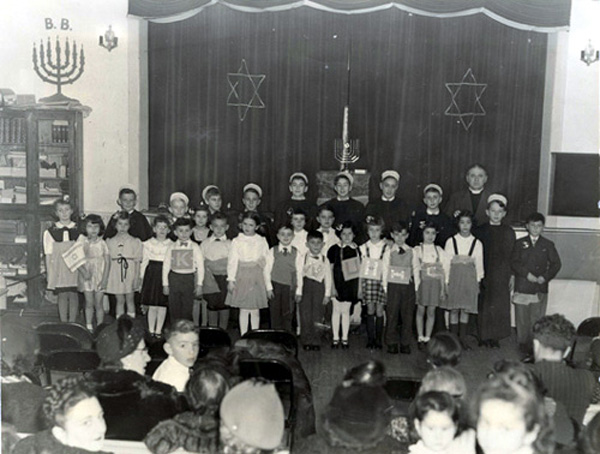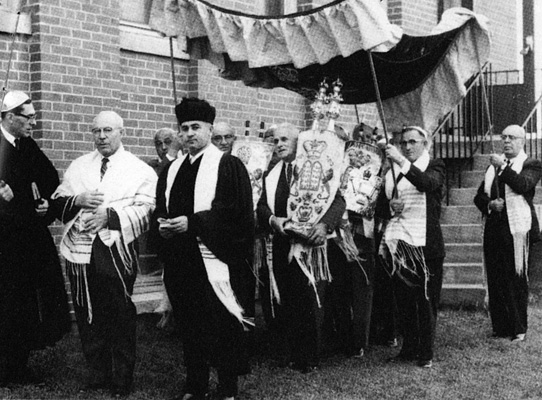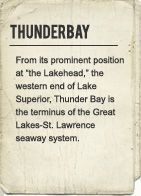Rabbis
The first full-time resident rabbi in Fort William was Rabbi Abraham Katz. He served the community as its shochet and mohel from 1908 until 1933, when he moved to Toronto to be with his children. Rabbi Polansky took over from Rabbi Katz in 1933. Like his predecessor, Rabbi Polansky was also the community’s shochet and mohel. He also maintained an open residence to members of his congregation during religious holidays, an act which was deemed to be extremely generous given the Rabbi’s slender income. His salary was offset somewhat by the relative advantage of the congregation providing free housing to the rabbi. Rabbi Polansky continued to serve Fort William and Port Arthur until 1948.
After Rabbi Polansky, there were a number of other rabbis who served the shul for shorter durations. Bris ceremonies were performed by Rev. Charloff and later by Dr. Cecil Dodick, a general medical practitioner. Kosher meats were imported either from Winnipeg or Toronto and distributed locally by Michael Slobodsky. Other rabbis who served the community included Rabbi Efraim Wolfson, originally from the United Kingdom. Larry Hurtig recalled playing ping pong at Rabbi Wolfson’s home. He was followed by Rabbi Goldwater. Rabbi Sternberg stayed for a few years during the late 1950s. He was quite Orthodox and found it difficult to secure kosher food for his family. The congregation liked him but he eventually moved to Minneapolis during the early 1960s. Rabbi Kanderovitz also served the congregation around that time.
Often rabbis would be brought in for High Holidays or to lead special services. Rabbi Lamont led the first services at the opening of the new synagogue on Grey Street in 1961. Through his involvement in drafting an open letter on the issue of educational reform and religious teaching in the public school system, we know that Rabbi Barnett Hasden was affiliated with Shaarey Shomayim in 1967. The congregation continued to look for a full-time rabbi, however, there were few likely candidates for the position given the small salary the congregation could afford to pay and its somewhat isolated (in proximity to large cities like Winnipeg and Toronto) northern location.
In the early 1970s, a young Rabbi Daniel Siegel moved to the community with his wife, Chana, as the community navigated its transition from its Orthodox roots to a more egalitarian style of service. In 1974 Rabbi Daniel Siegel resigned his post in order to take a position further west in Saskatoon, though he maintained contact with the community for a number of years. He was the last resident rabbi in Thunder Bay.









